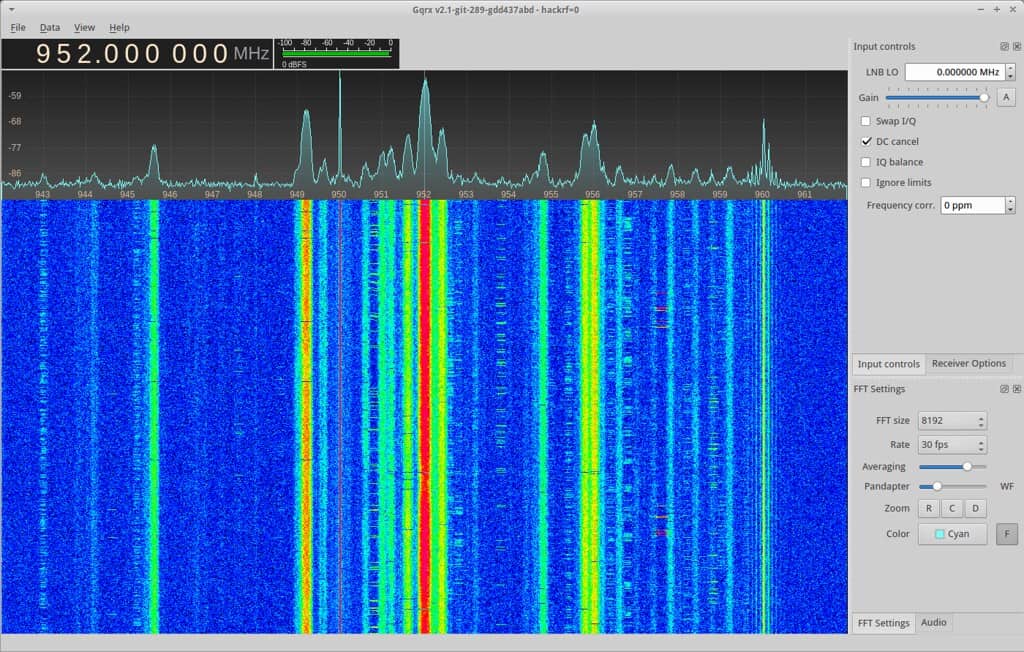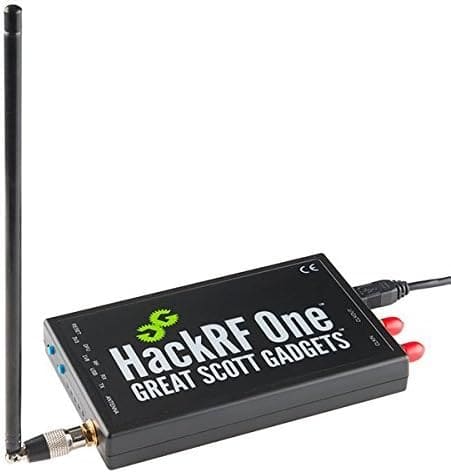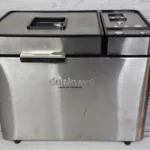HackRF is a powerful and versatile tool for anyone interested in exploring the world of radio. Its open-source nature and wide range of applications make it a popular choice for hobbyists, professionals, and researchers alike. This page is simply an introduction and overview of the device for people wanting to learn what the device is and how it’s used.
What Is HackRF?
HackRF is a Software Defined Radio (SDR) peripheral that allows the transmission and reception of radio signals across a wide frequency range. It stands out in the electronics community for its ability to handle various radio frequencies and its accessible design. HackRF serves as a bridge between software and radio waves, enabling enthusiasts and professionals to explore wireless communications.
What You Can Do with a HackRF
Analyzing Wireless Protocols
You can observe how different devices communicate. HackRF picks up a huge range of frequencies. Devices like remote controls, garage door openers, and even wireless keyboards use radio frequencies to communicate. HackRF can help you understand and even replicate these signals.
Testing Wireless Devices
Got a custom wireless project? HackRF is fantastic for testing the range and strength of your own wireless devices. You can even use it to purposefully jam signals and see how your device reacts in a less-than-ideal environment.
Security Research
Many “secure” wireless systems turn out to have flaws. HackRF is a valuable tool for security professionals and researchers looking to find potential exploits in wireless devices.
Key Specifications of the HackRF One
Here’s a quick look at what makes this little device so powerful:
| Specification | Value |
|---|---|
| Frequency range | 1 MHz to 6 GHz |
| Maximum sample rate | 20 million samples per second |
| Interface | USB |
| Compatibility | GNU Radio, SDR#, and more |
Remember: Using a HackRF to intercept communications may be illegal in your area. Always research your local laws and get proper consent before experimenting.
Overview of HackRF
Capabilities:
- Frequency range: 1 MHz to 6 GHz, covering a vast spectrum from AM radio to Wi-Fi and beyond.
- Modes: Transmit, receive, and half-duplex (transmit and receive alternately).
- Open-source: Hardware and software are open-source, allowing for customization and development by the community.
- Popular software: Works with SDR software like GNU Radio, SDR#, and HackRF tools, unlocking various functionalities.
Key features:
- Compact and portable: Fits easily in your hand, making it ideal for field work and experimentation.
- Powerful: Transmits up to 15 dBm of power, enabling effective signal transmission.
- Versatile: Used for various applications like:
- RF research and analysis: Studying radio protocols, testing equipment, and exploring wireless communication.
- Security testing: Identifying vulnerabilities in wireless systems and exploring attack vectors.
- Amateur radio: Experimenting with different radio frequencies and protocols.
- Education and learning: Understanding radio technology and the principles of SDR.
HackRF One Characteristics
The HackRF One is the current hardware iteration for the HackRF platform. It exhibits the following specifications:
- Frequency Range: 1 MHz to 6 GHz
- Transceiver: Half-duplex
- Sample Rates: 2 Msps to 20 Msps (megapulses per second, quadrature)
As an open source hardware platform, HackRF One is designed for versatility in testing and development. It can connect via USB or operate standalone, offering flexibility for users’ projects. The HackRF One is not only a tool but also part of a larger hardware ecosystem, supporting advancements in the exploration and creation of wireless technology.
Technical Specifications
The HackRF is a versatile tool in the world of software-defined radio (SDR), boasting a broad frequency range and equipped with essential hardware components tailored for various RF applications.
Frequency Capabilities
One of the HackRF’s notable features is its extensive frequency range. It operates between 1 MHz and 6 GHz, making it suitable for a vast array of radio frequency investigations. This range allows users to work with frequencies from the lower end of the spectrum, such as long-wave, all the way up to microwave frequencies in the GHz domain.
Hardware Components
The HackRF includes several key hardware components. Notably, the device supports a range of sample rates from 2 Msps to 20 Msps (million samples per second), which is essential for defining the quality and resolution of the received signal. Each sample is 8 bits in resolution, striking a balance between data throughput and detail. For connectivity, it uses a High Speed USB with a USB Micro-B connector, ensuring fast data transfer to and from the connected computer. Power is typically drawn from the USB bus, making the device highly portable and easy to use in various settings. In terms of physical connections, it features an SMA female antenna connector and SMA female clock input and output, crucial for connecting antennas and synchronizing with other equipment. The device’s design is openly available, inviting customization and enhancements from the hardware design community.
Connecting and Configuring HackRF
Before using the HackRF, one should become familiar with how to establish a proper connection to a computer and understand the appropriate ways to connect an antenna. This ensures the device functions correctly for various applications, from firmware updates to radio experimentation.
USB Interface
The HackRF One connects to a computer via a high-speed USB interface, which it uses for communication and power. Ensuring that the HackRF’s USB peripheral is functioning properly is crucial for software like gnuradio-companion or gqrx to detect and utilize the device. To start off:
- Connect the HackRF One to an available USB port on the computer.
- A computer may automatically recognize the device; if not, manual driver installation may be necessary.
- Confirm that the device is recognized by the system or the intended software.
It’s important for users to know that while the desktop environment can enhance the experience with graphical applications, it is not necessary for basic operations such as firmware updates.
Antenna Connections
For HackRF One, the antenna connects to an SMA female antenna connector. Attention to the type of antenna connector is essential, as mismatched connectors can lead to non-functional setups. Here’s what to watch for:
- Ensure you are using SMA connectors, not RP-SMA connectors, as they are incompatible despite their similar appearance.
- A secure connection is indicated by a snug fit. However, double-check that the antenna has the correct male or female end needed to create a successful link.
By carefully following these steps and confirming the correct connections, one sets up their HackRF for optimal performance and lays the groundwork for exploring the wide range of capabilities that software-defined radio has to offer.
Software Support

HackRF, a versatile software-defined radio device, interacts with a computer through a collection of software tools. Knowing about compatible software and how to keep the system updated ensures optimal performance and access to the latest features.
Compatible Software Packages
There are various software packages that work seamlessly with HackRF providing a wide range of functionalities:
- GQRX: A software defined radio receiver powered by GNU Radio and Qt, used for listening to a variety of radio signals.
- GNU Radio: An open-source toolkit that provides signal processing blocks to implement software radios.
- SDR# (SDRSharp): A popular Windows software for Software Defined Radio that supports HackRF.
For those interested in aviation data, the GNU Radio Mode-S/ADS-B software is specifically tailored to interact with HackRF to receive and interpret Mode-S and ADS-B signals from aircraft.
Another tool to consider is the QSpectrumAnalyzer, which makes spectrum analyzing with HackRF easy and accessible.







